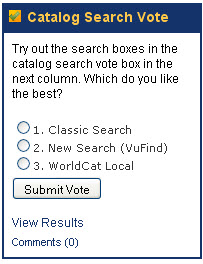Last week I traveled to Bloomington, Indiana for the Code4Lib 2011. I certainly learned a lot for my day job (more on that in the coming days), but I was actually there along with Nell Taylor to present my work with the Chicago Underground Library. This was a well-documented conference, so you can pretend you were right there with me, or else remember what it was like being there.
We were absolutely thrilled with the reception we got on Twitter, IRC, and blogs, particularly this post by Eric Hellman. I got involved with the project because I thought it was something important and worth doing, and a little outside validation from time to time is important to stave off burnout.
There were a few points and questions raised that I wanted to discuss in some more detail than I always did in the hallways or late at night in the hospitality suite. I also want to thank everyone who offered advice or future help, and I will spend some time over the next weeks getting organized to set up distributed coding/usability/etc.–as well as getting the regular Underground Library volunteers up to speed on the capabilities of the new website.
First, yes, the record item data is “stored” in Drupal. I am pretty sure librarians are the only ones bothered by this, as most people are ok with the concept of stuff being on websites. Think of it less as a library catalog and more as a series of webpages about things and maybe you will be happier about it. It is, however, done in a very Drupal-y way that as that I mentioned during the talk, is not easily replicable in other CMSs. That is not to say that is not not replicable in them, only that Drupal makes it trivial to set up this style of library catalog (I say trivial in the sense that if you know Drupal it’s trivial. If you don’t know Drupal, you will not find it so). After all, we were doing something similar in WordPress. Again, think of it as a series of webpages about stuff, not a library catalog!
That being said, I am a librarian, and over the last months I’ve become increasingly uncomfortable about our data. Nell put my fears succinctly on the CUL’s Facebook page “CUL’s new metal band: Crises of Data Confidence. First album: The Road to Damascus of Dublin Core.” Despite my name being bandied about on Twitter with Dublin Core, I am not tied to that as the only metadata schema that is worth considering. But I do like it, and could absolutely see building the catalog in something like Omeka that has it built in. The main point of doing something like this is to make the data easily retrievable and understandable by other systems, rather than being quite so flat and Drupal-y. As many people pointed out, Drupal is not a preservation strategy, which is absolutely right. Many people suggested using Islandora, which is a Drupal front end to a Fedora repository. I absolutely like this idea, though as of now we don’t exactly have a “repository”–and I will point out that the virtual catalog doesn’t really represent the physical library either for right now, as we don’t have space or staff to keep things in order.
Here’s the deal though. At the end of the day, we want to make this a replicable model for lots of people who don’t have lots of server space, technical ability, or time, but who do want to create their own Underground Library. That is the goal, and that goal will inform future development. As I said, lots of people offered to help, and I will be taking all of you up on those offers.
I am probably forgetting to answer other questions or comments, so please let me know if there’s something else I should address.
